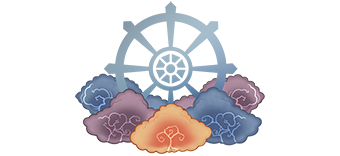Blog: Buddhist Perspectives on Grief and Loss
Blog: Buddhist Perspectives on Grief and Loss
By Isa Gucciardi, Ph.D.
In Robert Thurman’s prelude to his translation of Bardo Thodol, commonly translated as The Tibetan Book of the Dead, he takes to task scientific materialists’ perspective that death is a terminal state, a state of nothingness where life is destroyed. He points out that these materialists “have never observed even one material thing become nothing. Why should the energy reality of a state of awareness [life] ……be the exception to the law of physics that energy is conserved and only transformed?”
I have always appreciated Dr. Thurman’s willingness to take on monolithic prejudices, in the name of science, in response to spiritual questions. I have always felt the wholesale rejection of notions such as the possibility of life after death and the existence of spirit was highly unscientific. In order to step into the universe of life beyond death from the Buddhist perspective, we have to allow ourselves to be disabused of the ways in which we may have unwittingly digested the viewpoints of scientific materialism on these subjects simply because they dominate in our education system.
Buddhist investigations into these matters offer us the possibility that spirit, or something like it, might exist, and might move from lifetime to lifetime – or at least past the moment of death in this lifetime. Tibetan Buddhists have investigated this matter again and again over the centuries—particularly, with respect to the reincarnation of certain Buddhist lamas. His Holiness the Dalai Lama is the most famous of these tulkus, or reincarnation lamas. This lifetime is the fourteenth time he has reincarnated as the Dalai Lama. He was recognized in the same way most tulkus are recognized: through a series of processes of “proving” that the same consciousness is taking a new form after a young child has been identified as a potential candidate for the reincarnation of a deceased lama.
One of the most interesting of these processes is to place a set of objects of the previous lama before the young child who has been identified as a potential reincarnation. Some of these objects belonged to the deceased lama and some did not. If the child picks up the objects that did belong to the deceased lama consistently, this is seen as an indicator that the child could be the reincarnation of the deceased lama. But this is only one set of “provings” which, when all their conditions are met, demonstrate that the child is the reincarnation. The pronouncement and recognition of the reincarnation is only made after this and similar explorations based on a centuries-old methodology are accomplished.
If we allow ourselves to incorporate this and other perspectives that Buddhism has to offer about death, our whole relationship to our life changes. If it is true that we are beings who are moving through different forms and experiencing multiple reincarnations, the life that we are currently living takes on a completely different context. The way we view our own death changes. And the way we view the death of our loved ones changes.
This last point is very important when we speak of Buddhist perspectives on grief and loss. If a loved one dies and if it is possible that there is some continuum of that person’s consciousness past death, what could that mean for the way we experience that person’s loss. How might this change the way we grieve?
The answers to these questions are unique for every person, but some common themes emerge from this sort of inquiry. One such theme highlights the nature of our attachments to the person we have lost. If we allow ourselves to consider the possibility that the consciousness of this person has not disappeared into oblivion, and that they are actually following a path, unique and important to them as they move beyond this lifetime, what place does our attachment to them have?
This inquiry plunges us into the heart of the most fundamental of Buddhist teachings – that of the Four Noble Truths. In his book by the same name, His Holiness the Dalai Lama outlines the importance of these teachings, which examine the way our attachments and aversions create suffering. These teachings also examine the ways in which our misconceptions cause us to suffer.
This brings us to an interesting point. If we approach the experience of the death of a loved one as a teaching about the nature of our attachments as demonstrated in our relationship to that person, a wider perspective about their death opens. And if we understand that the path we walk in grieving the loss of this person is a path toward discovering the nature of our attachments and how those attachments contribute to our grief, our grieving takes on new import. The path through grief and loss then delivers us to the beginning of a point of self-inquiry that can lead to healing and a return to joy.
I further explore these concepts on Episode 43 of the Sacred Stream Radio Podcast: Buddhist Perspectives on Death. Stream on sacredstream.org or on your favorite podcasting platform.

